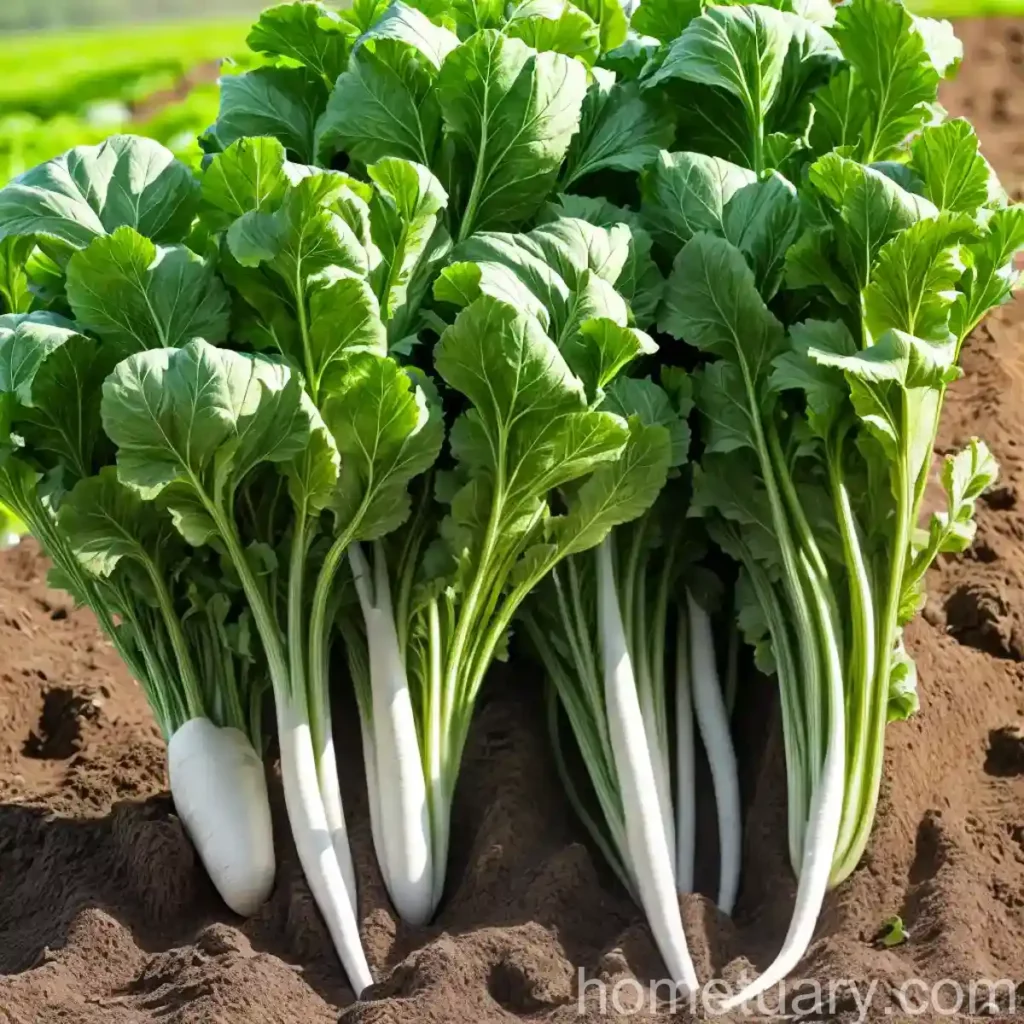Plant Scientist’s Guide to Sugar Beet Cultivation
What is sugar beet (Beta vulgaris subsp. vulgaris)?
Sugar beet (Beta vulgaris subsp. vulgaris) is a biennial root vegetable that belongs to the Amaranthaceae family. It is cultivated for its high sugar content and plays a significant role in the production of sugar globally. The plant is known for its large, fleshy root that contains a high concentration of sucrose, making it a valuable crop for sugar production.
Key Takeaways – Sugar Beet (Beta vulgaris subsp. vulgaris)
Before diving into the details of sugar beet cultivation, let’s review some key takeaways about this crop:
- Sugar beet is a biennial root vegetable known for its high sugar content.
- It is a valuable crop for sugar production on a global scale.
- The plant belongs to the Amaranthaceae family and is scientifically classified as Beta vulgaris subsp. vulgaris.
- Sugar beets have significant cultural, industrial, and nutritional importance.
Now, let’s explore the various aspects of cultivating sugar beets, including culture, uses, water requirements, sunlight exposure, fertilizer needs, soil considerations, pruning techniques, propagation methods, and more.
Culture
Uses
Sugar beets have versatile uses, with their primary purpose being the extraction of sugar. The extracted sugar is used in various food products, including confectionery, baked goods, and beverages. Additionally, sugar beet byproducts are utilized in animal feed. Beyond the food industry, sugar beets are increasingly used for biofuel production due to their high sugar content.
Water
Irrigation Requirements: Sugar beets require consistent moisture throughout their growth stages, particularly during root development. Adequate irrigation is crucial to support healthy root growth and maximize sugar content. The water needs of sugar beet crops vary depending on factors such as soil type, climate, and stage of growth.
Irrigation Techniques: Drip irrigation and furrow irrigation are commonly used in sugar beet cultivation to ensure efficient water delivery to the root zone while minimizing water wastage.
Sunlight
Sugar beets thrive in full sunlight, requiring at least 6-8 hours of direct sunlight per day. Adequate sunlight exposure promotes photosynthesis, which is essential for sugar production within the plant’s leaves and subsequent accumulation in the roots.
Fertilizer
Nutrient Requirements: Sugar beet crops benefit from a well-balanced fertilizer regime that addresses their specific nutrient needs. Key nutrients for sugar beet cultivation include nitrogen, phosphorus, and potassium, along with essential micronutrients such as boron and zinc.
Fertilization Techniques: Fertilizers are typically applied before planting and during the crop’s growth stages. Soil testing is important for determining the existing nutrient levels and optimizing fertilizer application to meet the crop’s requirements.
Soil
Soil Type: Sugar beets thrive in well-drained, sandy loam soils with good fertility. The ideal soil pH ranges from 6.0 to 7.5, providing an optimal environment for root development and sugar accumulation.
Soil Preparation: Prior to planting, soil should be adequately prepared through practices such as thorough tilling and the incorporation of organic matter. Proper soil preparation promotes favorable conditions for seed germination and early seedling growth.
Pruning
Pruning is not a common practice in sugar beet cultivation, as the focus is primarily on promoting healthy root development. However, removal of diseased or damaged leaves can help maintain overall plant health and prevent the spread of pathogens within the crop.
Propagation
Sugar beets are propagated from seeds, which are sown directly into the prepared soil. The seeds should be planted at the recommended spacing and depth to facilitate uniform emergence and optimal root development. Quality seeds from reputable suppliers are essential for establishing a healthy sugar beet crop.
Container Popularity
Sugar beet cultivation is primarily conducted in open fields rather than containers due to the crop’s root development requirements and the scale of commercial production.
Common Diseases
Disease Diagnosis
Sugar beets are susceptible to various diseases, including Cercospora leaf spot, Rhizoctonia root rot, and powdery mildew. Early diagnosis of these diseases is critical for implementing timely and effective management strategies to minimize yield losses.
Disease Management
Integrated Pest and Disease Management: A proactive approach that integrates cultural, biological, and chemical control measures is pivotal in managing diseases in sugar beet crops. Crop rotation, resistant cultivars, and strategic fungicide applications are key components of disease management programs.
Common Pests
Sugar beet crops are vulnerable to pest infestations, with common pests including sugar beet root maggot, aphids, and nematodes. These pests can impact plant health and reduce overall yield if not managed effectively.
Pest Control Measures: Integrated pest management incorporating techniques such as crop rotation, insecticide applications, and biological control agents is essential for minimizing pest damage in sugar beet cultivation.
Botanist’s Tips
For successful sugar beet cultivation, consider the following botanist’s tips:
- Select high-quality seeds from reliable sources to establish a healthy and uniform crop.
- Monitor soil moisture levels to ensure consistent moisture throughout the growing season, particularly during root development.
- Implement integrated pest and disease management practices to protect the crop from potential threats and minimize yield losses.
Fun Facts
- The sugar content in sugar beet roots can range from 16% to 22%, making them a valuable source of sucrose for sugar production.
- Sugar beets are used not only in food and beverage production but also in the biofuel industry, contributing to sustainable energy sources.
Now that we have explored the essential aspects of sugar beet cultivation, let’s delve into further resources and external links for in-depth information.
Links to External Resources
For additional information on sugar beet cultivation, sugar production, and related topics, the following resources provide valuable insights:
- USDA Economic Research Service – Sugar and Sweeteners
- American Crystal Sugar Company – Sugar Beet Cultivation
- FAO – Sugar Beet Cultivation Guide
- University of Nebraska-Lincoln – Sugar Beet Production Guide
- British Beet Research Organisation – Sugar Beet Research
By exploring these resources, you can gain comprehensive insights into sugar beet cultivation, industry trends, and research developments.
In conclusion, sugar beet cultivation plays a significant role in global sugar production and offers diverse opportunities for both food and non-food applications. Understanding the key cultural and agronomic aspects of sugar beets is essential for successful cultivation and optimal yield. By incorporating scientific knowledge, best practices, and effective management strategies, growers can enhance the sustainability and productivity of sugar beet crops, contributing to the continued availability of this valuable crop for various industries.
Remember the keywords:
1. Sugar beet cultivation
2. Beet farming techniques
3. Growing sugar beets
4. Sugar beet varieties
5. Benefits of sugar beets
6. Nutritional value of sugar beets
7. Sugar beet production
8. Harvesting sugar beets
9. Sugar beet industry
10. Sugar beet processing
11. Sugar beets for biofuel
12. Sugar beet diseases
13. Pest control in sugar beet farming
14. Sugar beet market
15. Sugar beet exports
16. Sugar beet sustainability
17. Sugar beet genetics
18. Sugar beet research
19. Sugar beet agronomy
20. Sugar beet roots and leaves
21. Sugar beet irrigation
22. Soil requirements for sugar beets
23. Sugar beet season
24. Sugar beet crop rotation
25. Utilization of sugar beets
26. Sugar beet processing techniques
27. Sugar beet byproducts
28. Sugar beet food products
29. Sugar beet recipes
30. Sugar beet syrup
31. Sugar beet juice
32. Sugar beet in animal feed
33. Industrial uses of sugar beets
34. Sugar beet biochemistry
35. Sugar beet storage
36. Sugar beet transportation
37. Sugar beet pests and diseases management
38. Sugar beet farming equipment
39. Sugar beet farming economics
40. Sugar beet root development
41. Sugar beet leaf morphology
42. Sugar beet crop management
43. Sugar beet crop viability
44. Sugar beet rosette stage
45. Sugar beet seed production
46. Sugar beet canopy formation
47. Sugar beet crop nutrition
48. Sugar beet seed treatment
49. Flowering in sugar beet plants
50. Sugar beet biotechnology
This extensive guide covers a wide range of topics related to sugar beet cultivation and provides a comprehensive understanding of this important crop.















